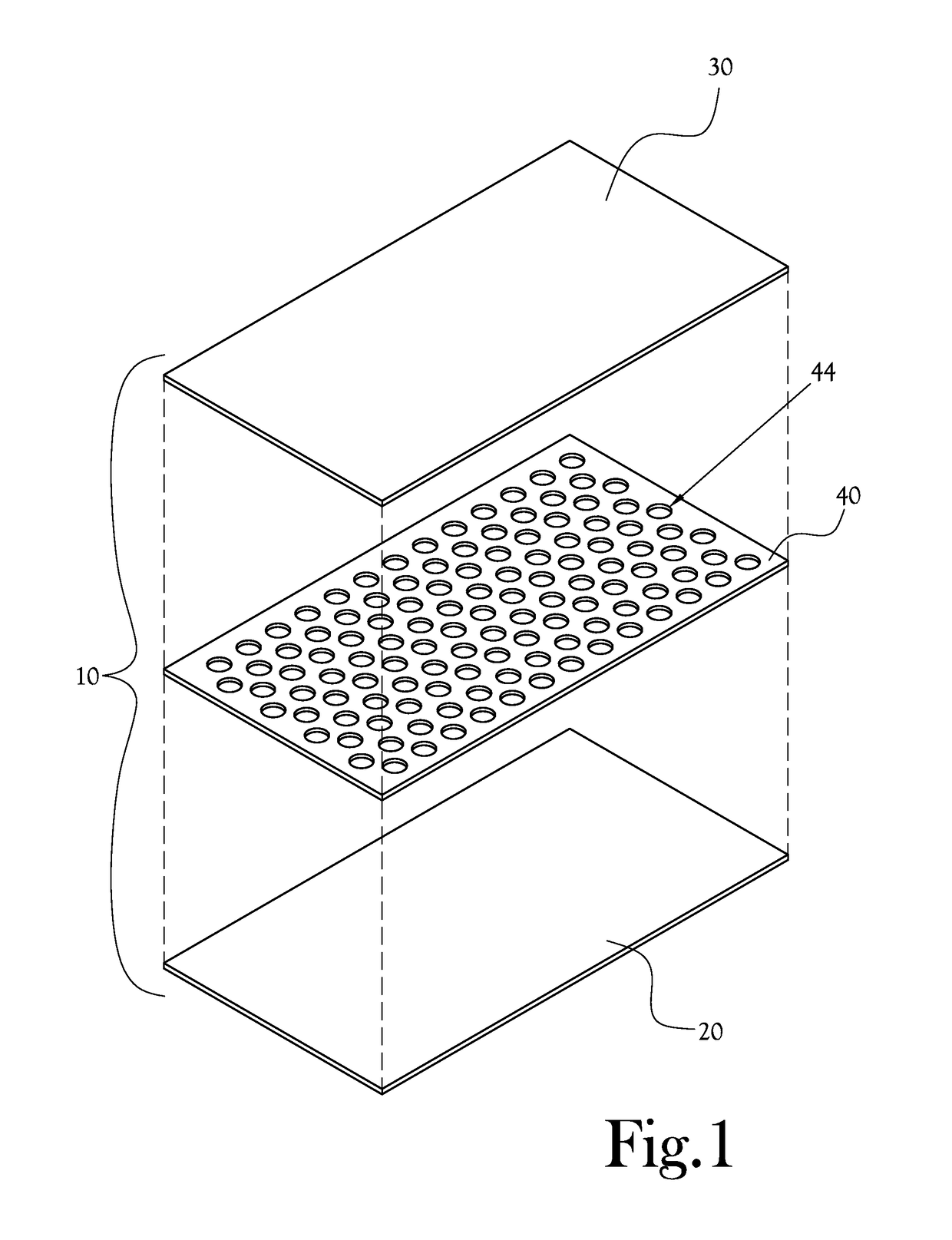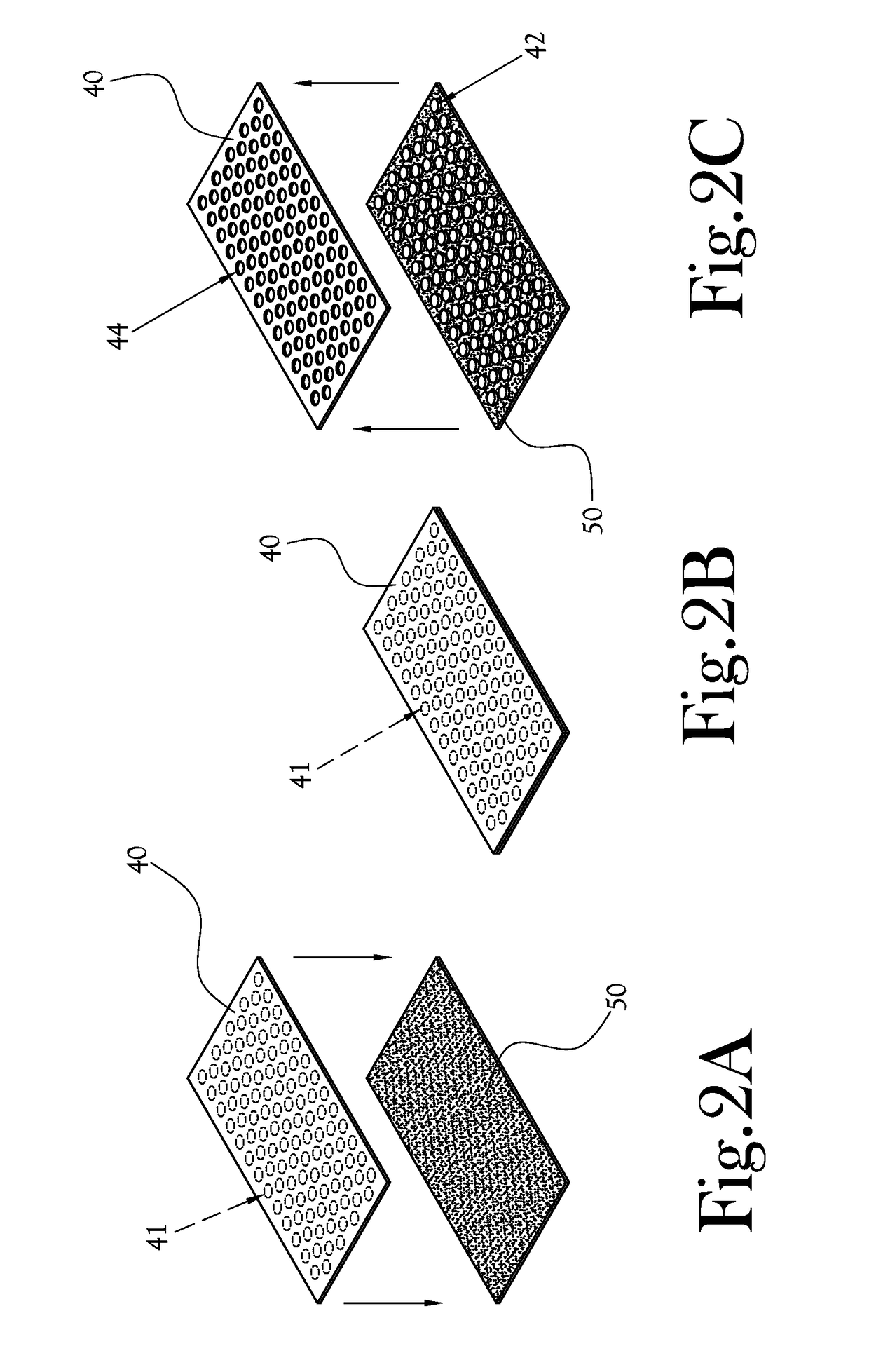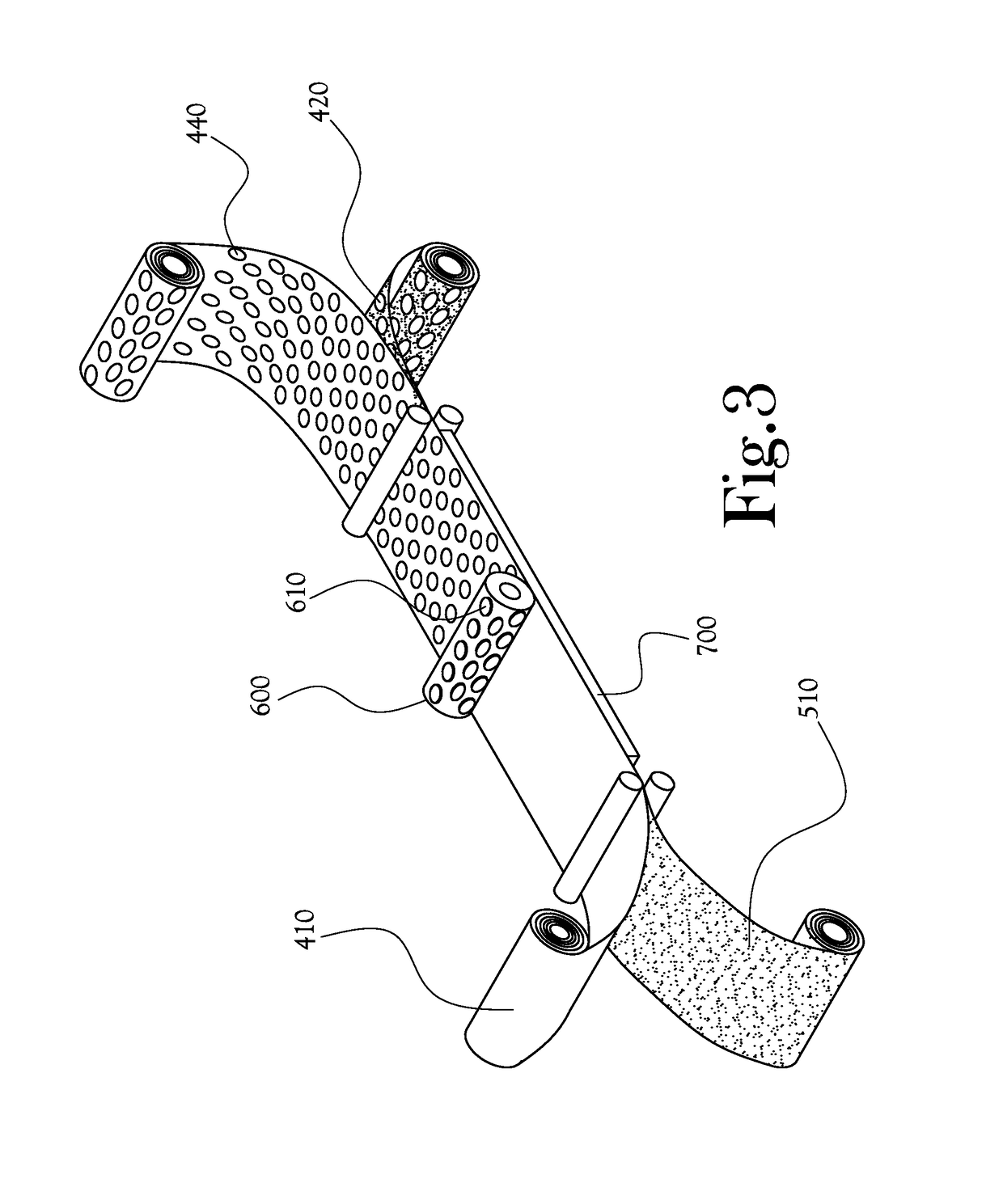Perforated binder for laminated wound dressing
a perforated, wound dressing technology, applied in the field of wound dressings, can solve the problems of affecting the healing process, and affecting the healing effect of the wound, so as to promote the formation of bonds, inhibit the transmigration, and keep the wound dry.
- Summary
- Abstract
- Description
- Claims
- Application Information
AI Technical Summary
Benefits of technology
Problems solved by technology
Method used
Image
Examples
Embodiment Construction
[0021]The present invention in some of its embodiments is directed toward a process of fabricating a perforated binder for a laminated dressing.
[0022]According to one embodiment of the present general inventive concept, illustrated generally at FIG. 1, a laminated dressing 10 comprises three layers: a lower layer 20, comprising a fiber material, to directly contact a patient's skin and a wound area; an upper layer 30, comprising a foam or foam-like material to absorb exudate and moisture; and a middle layer or binder layer 40 (hereinafter “binder layer”), comprising a binder material to bind the fiber-based lower layer 20 and the foam-based upper layer 30. When the dressing 10 is applied to a patient's skin and wound, the fiber-based lower layer 20 is placed in direct contact with the patient's skin, generally covering the wound at least in part; the binder layer 40 and foam-based upper layer 30 sit on top of the fiber-based lower layer 20 with respect to the patient's skin.
[0023]Ge...
PUM
| Property | Measurement | Unit |
|---|---|---|
| area | aaaaa | aaaaa |
| physical | aaaaa | aaaaa |
| moisture-impermeable | aaaaa | aaaaa |
Abstract
Description
Claims
Application Information
 Login to View More
Login to View More - R&D
- Intellectual Property
- Life Sciences
- Materials
- Tech Scout
- Unparalleled Data Quality
- Higher Quality Content
- 60% Fewer Hallucinations
Browse by: Latest US Patents, China's latest patents, Technical Efficacy Thesaurus, Application Domain, Technology Topic, Popular Technical Reports.
© 2025 PatSnap. All rights reserved.Legal|Privacy policy|Modern Slavery Act Transparency Statement|Sitemap|About US| Contact US: help@patsnap.com



